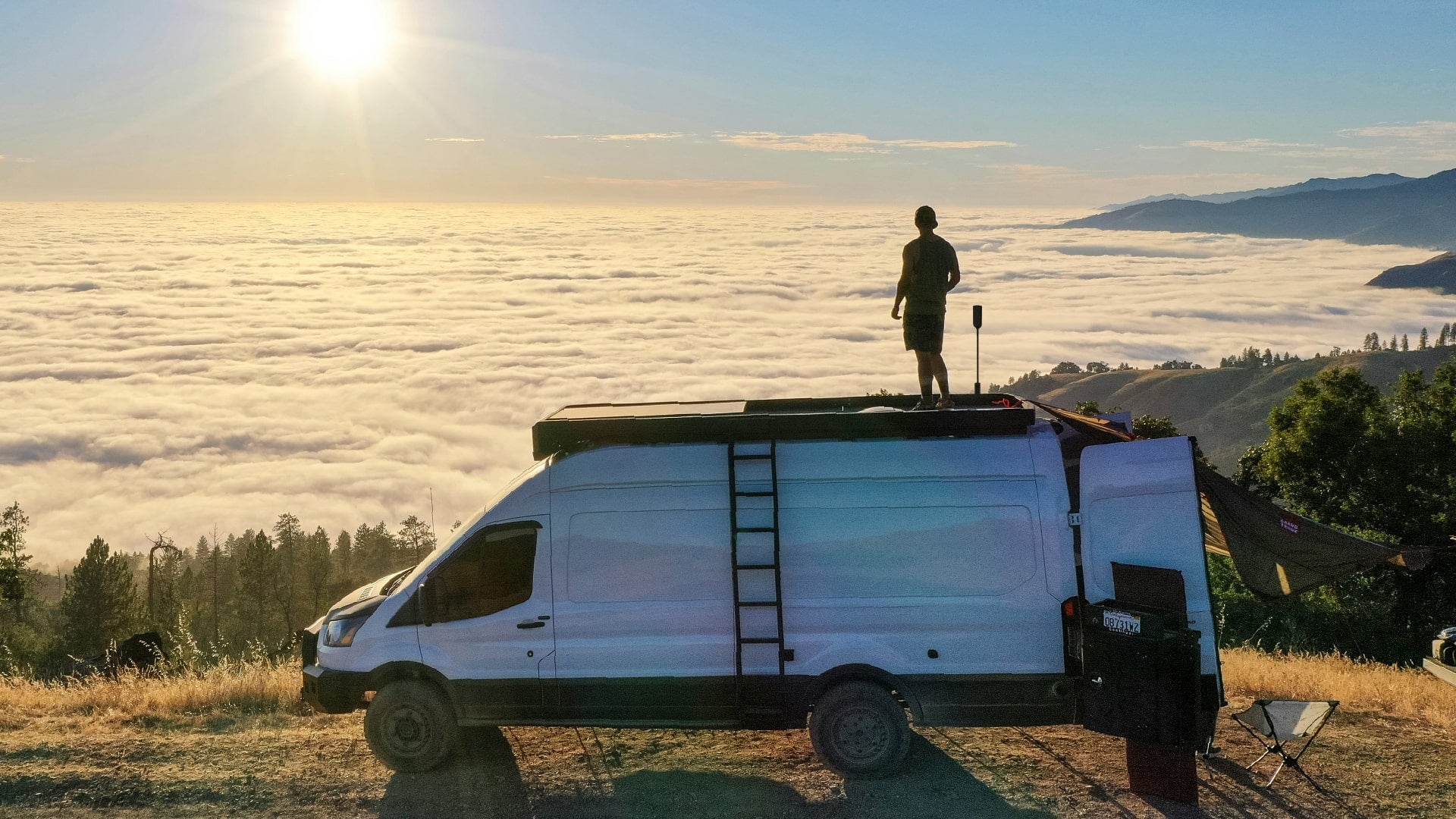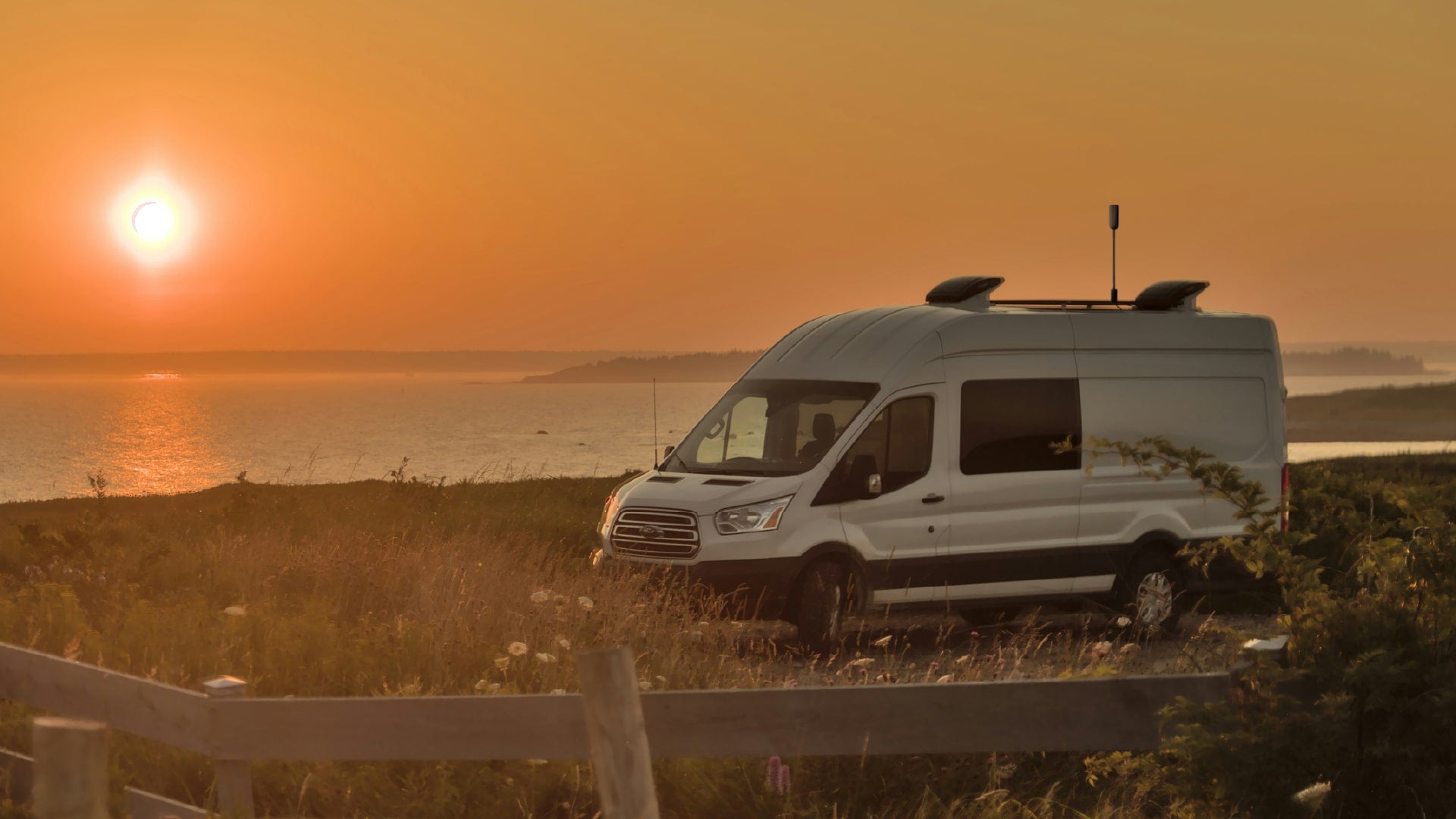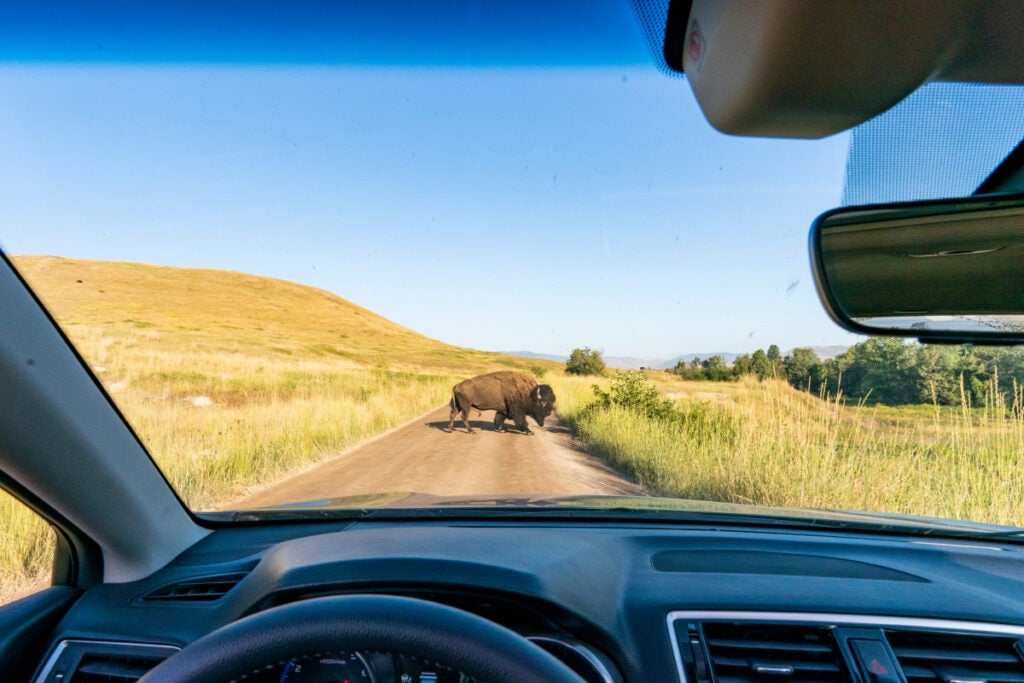True campers know the feeling when you’ve found the perfect spot, with towering trees, mountain views, and not another soul around. You reach for your phone to check the weather or text your family, and you see just one tiny bar that can’t quite help you with anything.
That’s where a cell signal booster comes in. These small but mighty devices can turn a whisper of cell service into a usable signal, helping you stay connected when it matters most.
How does it work?
A signal booster is a small amplification system for your cell signal. Think of it like a megaphone for your cell signal. weBoost has spent years perfecting the design for life on the road.
It has three main parts that work together to boost your cell signal:
- The outside antenna (mounted on the roof of your vehicle or rig) picks up whatever weak cellular signal exists in your area and sends it to the amplifier.
- The amplifier strengthens that signal
- The inside antenna rebroadcasts the boosted signal inside your vehicle or rig so your phone can connect at full strength.
So when you’ve got at least a whisper of service, a weBoost booster can make it strong enough for calls, texts, and data, whether you’re chasing sunsets or work deadlines.

What It Does—and Doesn’t—Do
A weBoost booster can:
- Reduce dropped calls and make conversations clearer
- Help texts send and receive faster
- Boost basic data for maps, weather, and light browsing
- Support multiple devices and carriers at once
- Enhance signal for better coverage or browsing speed whether you have one bar or three (a booster could take you from barely there to decent, or decent to great)
- Improve handoffs while in transit between cell towers for more seamless reception or browsing while driving
But it can’t:
- Create a cell signal where none exists (it needs something to amplify)
- Replace Wi-Fi or satellite internet – boosters only amplify cell service
- Guarantee fast browsing at all times – your signal may still be slow, especially if attempting heavy usage like video streaming
Bottom line: If your phone shows even one bar, a weBoost booster can make it feel like more.
Booster vs. Hotspot vs. Satellite
If you’re trying to stay connected on the road, here’s how your options stack up:
| Feature | Signal Booster | Mobile Hotspot | Satellite |
| Amplifies existing cell signal | Turns cellular data into Wi-Fi | Connects directly to satellites | |
| Initial cost | $300–$500 | $200–$800 | $600+ |
| Monthly Cost | None | Yes – $50–$150/mo | Yes – $150–$200/mo |
| Setup | 15–30 minutes | 0-15 minutes | 20–30 minutes |
| Requires line of sight | No | No | Yes |
| Power Requirements | AC or DC power | Built in battery or USB charge | AC or DC power |
| Best For | Improving signal on cellular devices | Browsing on WiFi enabled devices (in range of a cellular signal) | Browsing on WiFi enabled devices (outside of a cellular signal) |
| Internet Speed | Depends on carrier signal | Depends on carrier signal | 5-250 Mbps (depending on provider) |
| Works Everywhere | Needs existing signal | Needs existing signal | Works almost anywhere (needs a clear sky view) |
How to Choose a Booster
There’s no one-size-fits-all answer to the “what booster is best?” question. The best booster for you depends on how you travel, but no matter how you camp, weBoost has a setup made for your lifestyle:
- Sedan or SUV: Compact, travel-ready boosters are perfect for quick getaways
- Van or Overland Rig: Mid-range power with flexible installation options are perfect for travelers who move often
- Towable RV or Motorhome: Heavy-duty systems are built for long stays and wide coverage areas
Depending on the booster selected, weBoost can amplify cell signal up to 32 times, improving voice, text, and data performance. No subscriptions. No apps. Just stronger, steadier service when it matters most.
Shop Signal Boosters
What You Can Actually Do with a Booster
The point of a booster isn’t that you can scroll endlessly while you’re supposed to be enjoying your trip — it’s being able to stay connected when it counts. With a good booster, you can do things like:
- Load maps and directions
- Get weather or wildfire updates
- Text family or friends to check in
- Book a last-minute campsite
- Sync saved lists or offline maps from The Dyrt
In other words, a booster can give you peace of mind and basic connectivity for planning, communication, and real-time decisions while you’re on the road.

The Bottom Line
A signal booster won’t make you immune to dead zones, but it will turn those barely-there moments of signal into actual working connectivity. For weekend warriors, van lifers, and RV nomads, that’s often exactly what you need.
Whether you’re bagging trails, getting a little work done, or just keeping in touch, it’s one of those upgrades you’ll wonder how you ever traveled without.
FAQs
Q: Will it work in a true dead zone?
A: No. If there’s absolutely no signal from any carrier, it has nothing to amplify.
Q: Does it work with all carriers?
A: Most boosters (including weBoost) support all major U.S. carriers—Verizon, AT&T, T-Mobile, and more. You don’t need separate boosters for different phones.
Q: Can I call 911 if I have a booster?
A: If there’s even a minimal signal from any carrier, a booster can usually help you reach emergency services by increasing the chances of having a reliable connection.
Q: Do I still need a hotspot?
A: If you expect to browse on your cellular device, a cellular booster is sufficient. However, if you typically travel with a computer or other device without cellular service, you’ll still need a hotspot to connect it to the internet. Cellular boosters can improve hotspot service, but you cannot connect a WiFi enabled device directly to a cellular booster like you can to a hotspot.
Popular Articles:
Articles on The Dyrt Magazine may contain links to affiliate websites. The Dyrt receives an affiliate commission for any purchases made by using such links at no additional cost to you the consumer.




